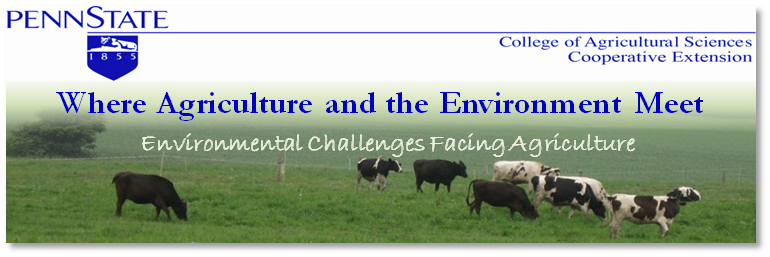 |
| Photo by Dan McFarland |
Precision feeding of dairy cows is a great way to address water quality concerns in local waterways and the Chesapeake Bay. So what is precision feeding? It is feeding dairy cows to most precisely meet their nutrient requirements based on their level of production. Because precision feeding depends on the level of milk production it is a very farm specific practice that can be difficult to identify without evaluating more than just the nitrogen and phosphorus content of the ration.
However, the ration is the first place to start when implementing precision feeding and we will start there with more specifically defining precision feeding. Phosphorus is a required nutrient for the cow, but it can be supplied in the ration at levels greater than what she needs. Any excess phosphorus is excreted in the manure and provides no benefit to the cow. In general, a phosphorus level of 0.37% of the ration is enough to meet the needs of most animals. Supplementation of phosphorus in dairy rations is rarely needed and is a quick ration adjustment to make. Many farms are doing better at feeding a lower phosphorus diet, but byproducts (brewer’s grains, distiller’s grains, etc.) tend to be a cheaper feed alternative to more traditional feedstuffs, but they are also high in phosphorus. Therefore, incorporating byproducts into a ration can lead to higher phosphorus diets than would be recommended.
Nitrogen is the other nutrient we are most concerned with and, like phosphorus, excess nitrogen above what the cow needs for her level of milk production will be excreted in the urine. However, unlike phosphorus, nitrogen cannot simply be reduced in the ration without potential negative impacts. The amount of energy in the ration along with a number of other factors greatly impacts how efficiently nitrogen is utilized by the cow and how much needs to be included in the ration. If other aspects of the ration are not balanced correctly or there is a problem with how feed is managed on the farm reducing the protein content of the ration could potentially lead to a loss of milk production.
When done correctly precision feeding will not only benefit local water ways, but will also increase the profitability of the dairy farm by reducing feed costs, but if implementing improperly it can lead to a loss of milk production. Therefore, implementation of precision feeding requires that the nutritionists and the farmer be educated on this practice before it should be implemented on the farm.
Penn State University along with other organizations have, and continue to, provide education to farmers and nutrition consults on how to best implement precision feeding on a farm.
Here is a link to the Penn State Extension website with more information on feeding dairy cattle. http://www.das.psu.edu/research-extension/dairy/nutrition

No comments:
Post a Comment